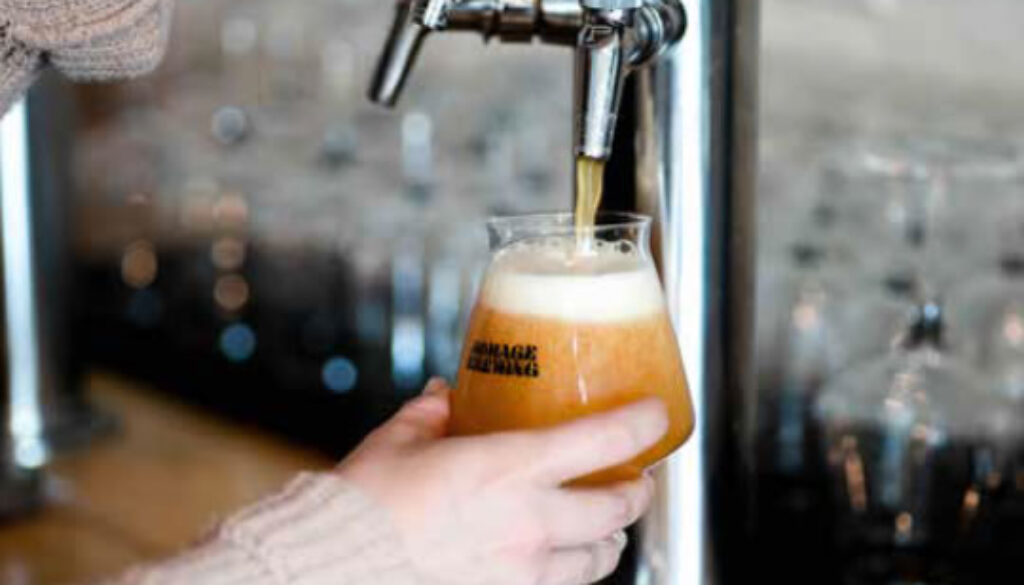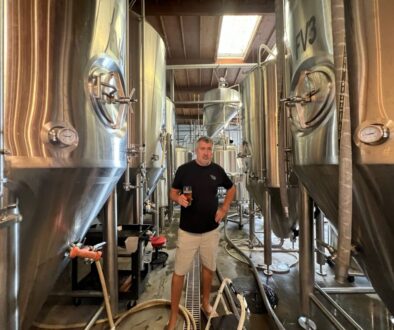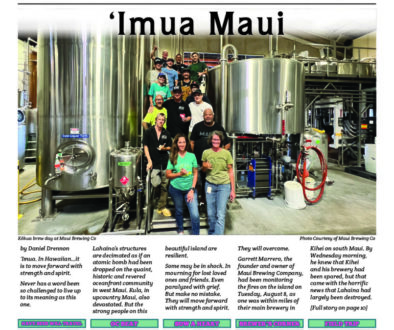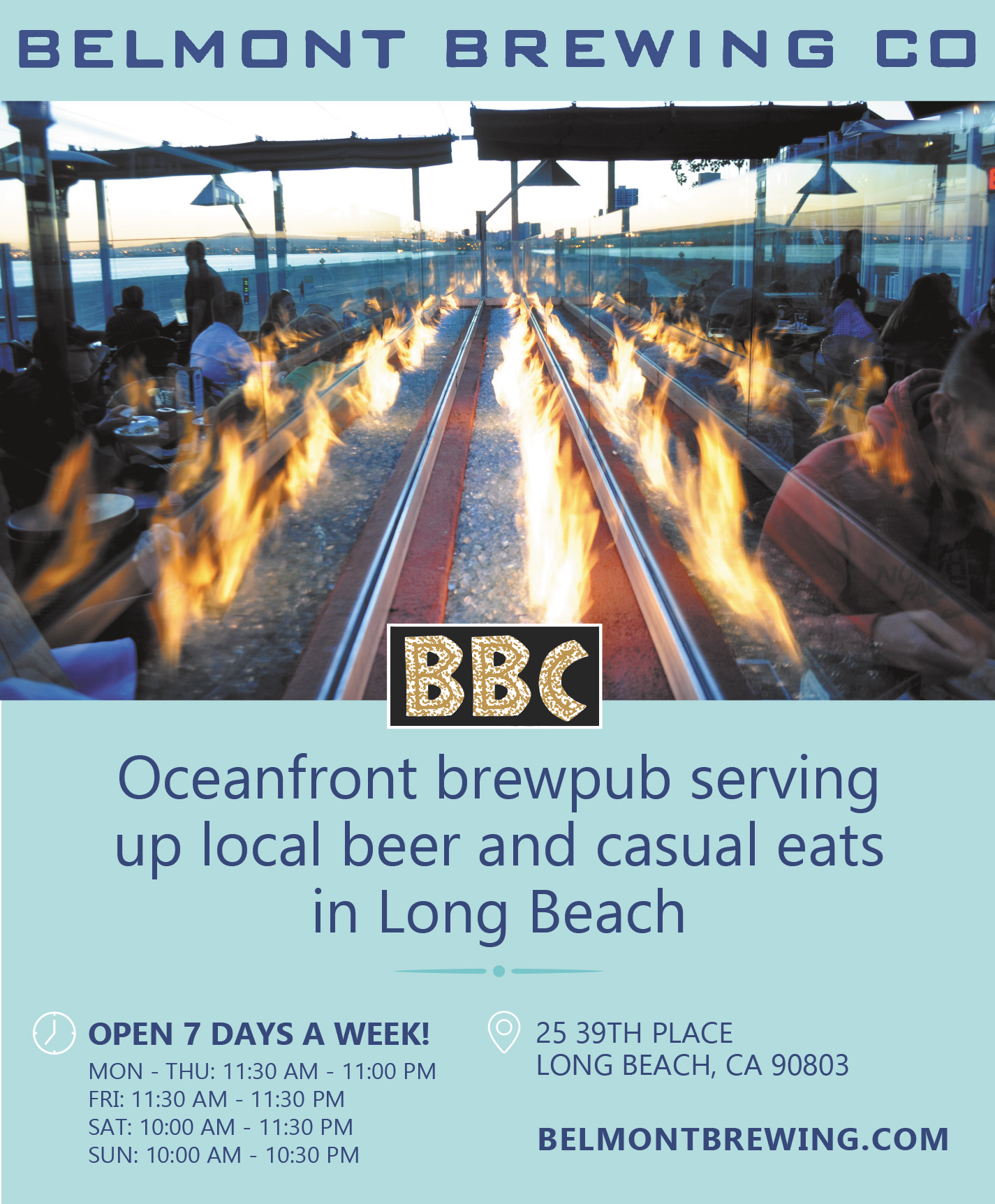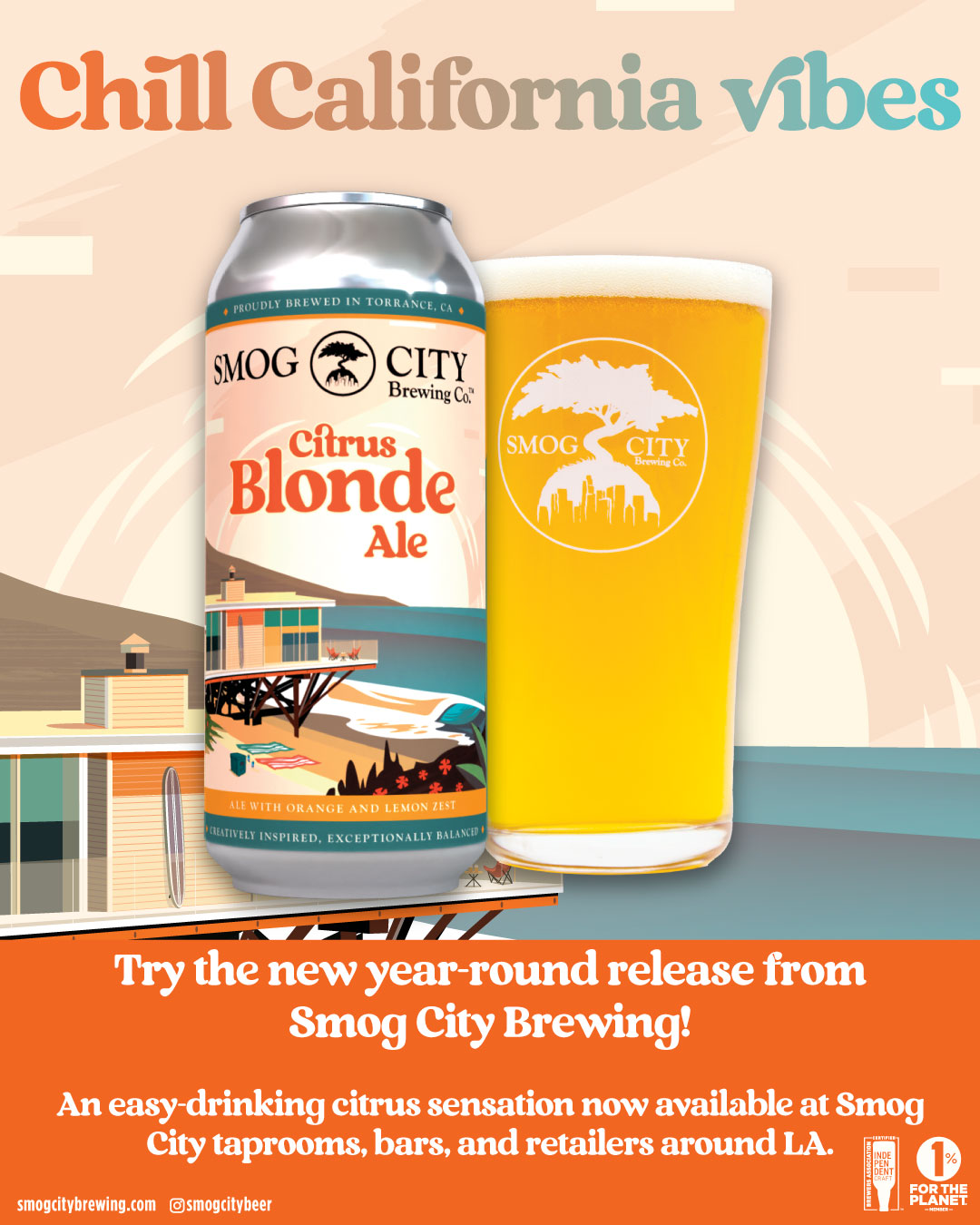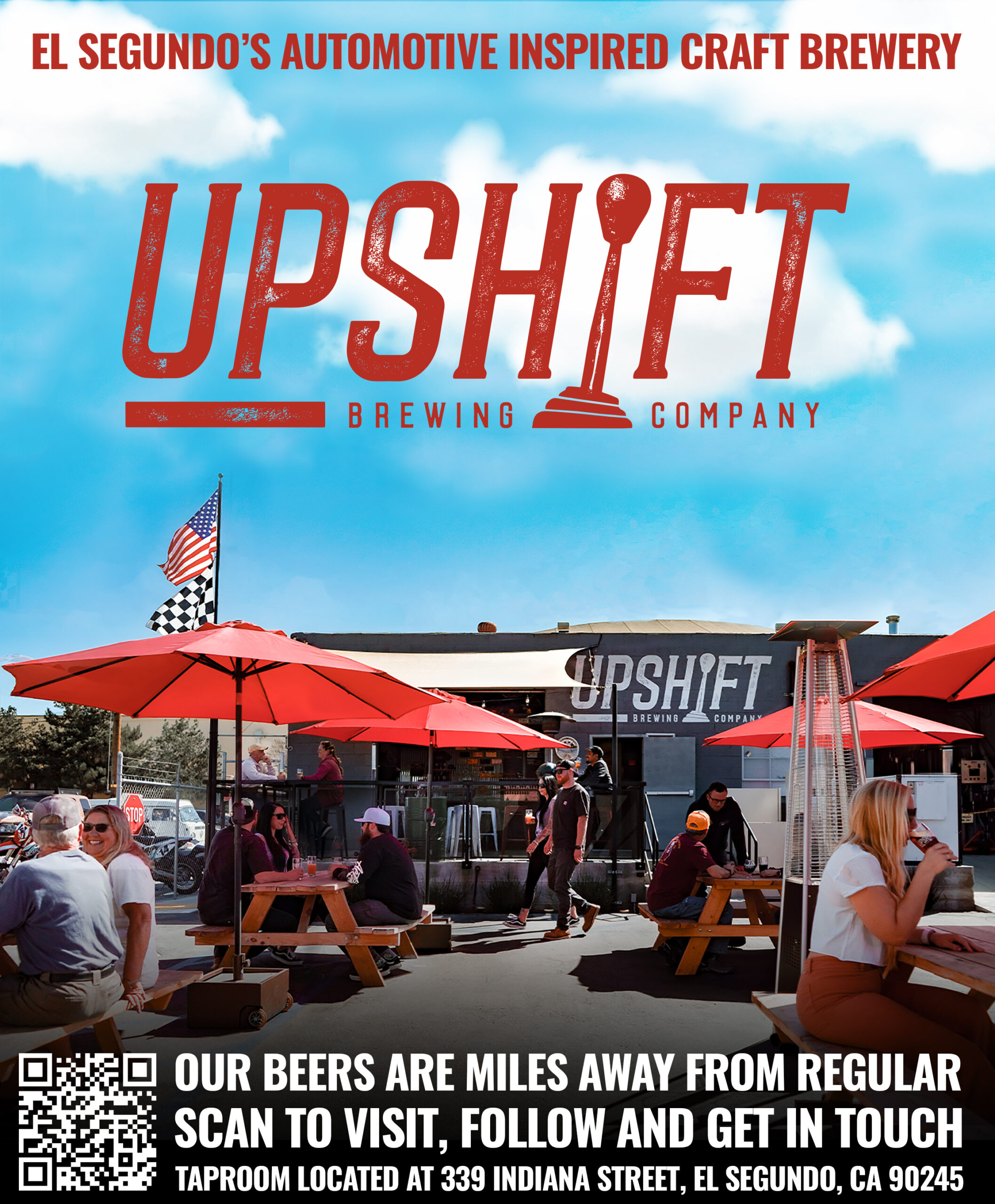Home Sweet Homage
When I last wrote about Homage two years ago, I used much of the following narrative — which I’m happy to report still applies today. Critically acclaimed back then, the buzz around Homage just keeps getting stronger and anticipation is sky high for their new location to open in Chinatown sometime in 2020.
The name for Homage Brewing comes from owner/founder Matthew Xavier Garcia wanting to acknowledge and pay tribute to the influences in his life, from music to movies, as well the artists that provided inspiration. Garcia, himself a guitar player for the now-defunct hard-core metal band A LOVE ENDS SUICIDE, speaks to a sense of humility and his debt to others in the genesis of Homage Brewing.
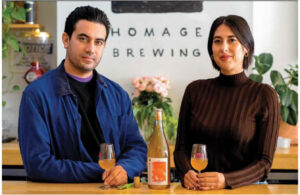
Formed with his wife Lauren and fellow professional musician turned head brewer Jeremiah Bignell, Garcia tells me Homage recognizes innovation and channels that spirit in everything they do. They are heavily influenced by iconic Belgian breweries such as Cantillon, 3 Fonteinen, and De Struise. Garcia met Bignell, calling him a “sour homebrewing legend,” at one of Chris Quiroga’s legendary Woodshop bottle share events. Garcia had been homebrewing since 2011 and immediately conceived the idea for Homage Brewing.
Garcia exuded, “I had been touring the country in a band, so I knew about branding, marketing and creating a culture. All that stuff formed who I am. My generation feels you don’t have to go to school to make something of yourself. When the music door closed, the beer door opened. I felt the same kind of spark I felt with music. You have to have the mindset of an artist when you undertake brewing. You understand how to create something from nothing. Once you understand a formula, it is the same for creating a song as it is for creating a base beer. I know structure and I know rearranging structure.”
Garcia, now 33 years old, started playing music in high school in West Covina and A LOVE ENDS SUICIDE enjoyed a very successful five year-run from 2003-2008 before disbanding (literally). After high school, he moved to Pasadena. There he had a four-year managerial stint at Congregation Ale House from 2012-2016. He continued to evolve his knowledge of everything beer and everything beer business.
Homage Brewing opened in May 2016 in Pomona between The Glass House and the venerable Fox Theatre music venues. That undeniable nexus between the artistry of playing music and brewing beer just keeps manifesting itself. Homage became what I call a “buzz brewery” right out of the gate, developing fans and critical acclaim much like a new band with a hit song.
I ask what’s been his philosophy on Homage beer styles. I can tell he likes the question by the excitement on his face. “Sours were always my jam. For Homage, me and Jeremiah’s goal is to take a blank canvas, then start blending with a nice aged hop and oak character, wild yeast character, low acidity, minerality, and, most of all, that it is all balanced. Not too tart. We really hang our hats on a well-balanced sour so you don’t have to pucker up. I hold our beers up to being as complex as a fine wine.”
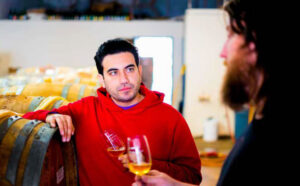
I point out that Homage, like so many other Belgian-influenced and/or sour-centric breweries, has navigated into the swelling sea of haze-makers. He smiles. “I was hesitant to get into the hazy IPA thing but it came to the point where it became a challenge to do it and then it became fun to pull off doing it as well as anyone else. It was a chance to push myself to do something new. It’s a style that is here to stay and we’re proud of the beers we’re making.”
I ask Garcia to describe himself and who he is for our readers. He thinks about it for a moment and responds, “The way I look at myself is that I am highly motivated with a true love for traditionalism and culture. What I am trying to do with Homage is create a feeling. When you go to Europe…Belgium…there is a feeling that you get. When you come to Homage, I want you to feel like you are having a unique experience.”
DRENNON: Since we last featured you in 2018, what is new with Homage?
GARCIA: A few new projects have been in motion since then. Firstly, we have steadily grown our barrel program to around a hundred oak barrels, and have seen tremendous results in the maturity of our house wild cultures adding beautiful nuances and depth to our beers. Our barrel program has also allowed us to explore new avenues of fermentation using not as common fruits such as grapes and apples, and even the skins of these fruits, which lead to very unique examples of mixed fermentation Saisons. We couldn’t be more excited to release these experiments. These ideas have been in the works for sometime now, and you’ll definitely be seeing them throughout 2020. We’ve also built upon our vision of marketing traditional styles ales and lagers while keeping up with current trends. We’ve been lucky to travel and collaborate with some of the best in the business over the past year, and you can definitely see the influence it has had on us. The wheels are always turning trying to find new ways to keep our beers exciting and ever evolving. Lastly, our Chinatown, Los Angeles expansion project is nearing completion. This has been a project that has been in the works for the past two years.
DRENNON: We are all too familiar with the myriad permit requirements a new brewery faces when opening in the City of Los Angeles. How is your highly-anticipated Chinatown location coming along?
GARCIA: We’ve definitely had our challenges, but each month that goes by the finish line seems to become more clear. I’m not quite ready to set a date yet, but it’s getting close.
DRENNON: What will be the respective sizes of your new space, your brew system and your tasting room?
GARCiA: Our new space will be 5,000 square feet and feature a 15 bbl brew system. Roughly half the space is dedicated to the tasting room, while the other half will be dedicated to production and barrel aging.
DRENNON: Will you have a kitchen and, if so, what kind of menu do you envision?
GARCIA: We will have a kitchen. We’re really excited to grow our brand into culinary. You can expect the same desire and passion to create unique and delicious offerings with quality ingredients to pair in harmony with our ales and lagers. Being surrounded by the exploding food scene in LA, there are so many talented chefs and restaurants, which makes LA a destination for some of the best food in the world. We plan to integrate the same values and artistic approach inspired by different cuisines globally and locally.

DRENNON: Any chance we will continue to see lagers/pilsners by Homage at your new brewery?
Garcia: Absolutely! Lagers have been a core focus in our beer program over the past two years. We intend to build on this program furthermore with more space to do so. We currently have a house lager/ fan favorite that we try to keep on tap in Pomona at all times called Pilsner Tristeza. It’s our take on an unfiltered North German style Pilsner. These Pilsners have lots of snappy hops with a clean noble bitterness, and pour clear straw yellow with notes of light bready malts. It’s literally the perfect beer! Aside from our Saisons, IPA’s, and Stouts, we also have strong love for English style session ales. We’ve showcased them on cask as well as nitro at our Pomona location and will continue to offer these styles at both locations.
DRENNON: Recently, Homage has emerged as a local leader in so-called “fruited beers.” What do you see as the misperceptions and/or misrepresentations of this style and what is your approach?
GARCIA: One misperception I’ve always felt indifferent about is the classification of farmhouse style saisons, brett ales, and oak aged mixed fermentation ales as a whole being classified or labeled as “Sour Ales”. I mean, sure, certain wild yeasts produce acid, but if blended with care and attention to balance, the term sour is something that misrepresents what these beers are, in my opinion. An incredibly complex Lambic style beer can get placed in the same “sour” category as a one-dimensional Berliner Weisse, even though they are not even remotely close in terms of flavor. It also turns certain people off just knowing it can possibly be tart. Since we’ve opened our doors nearly 4 years ago, our intention and approach with mixed fermentation ales is to create a complex ale with restrained acidity, rustic funk, and bright fruit characteristics. Similar to the balance you’d expect in Lambic or wine.
Another word that is over used is “hybrid”. It’s been imperative for us to help guide our consumers on how to perceive and define our aged hop Saisons with grapes or apples. We tend to shy away from using the word “hybrid”. In my opinion, using the word “hybrid” is somewhat misconstrued and doesn’t accurately describe what we’re trying to accomplish with our ales. We are still just making ale, but incorporating traditional and non-traditional techniques utilized by wine makers, Belgian brewers, and cider makers.
Our approach to grapes is quite similar to most of our other fruited offerings. We blend to taste, then make adjustments based off of the specific characteristics of the fruit, which include acidity, tannins, and texture.
We’ll be releasing a perfect example of an ale aged in oak with Sauvignon Blanc grape must called, “Colour Orange” in the next month. We pressed the fruit and did a skin contact partial fermentation with the grapes for 10 days, spontaneously fermenting the juice using only native wild yeast from the grape skins. We then blended ales from hand-picked barrels and allowed our house wild yeast to continue the fermentation until completion. Be sure to keep your eyes on this one!
DRENNON: What have been your biggest lessons learned since you opened your Pomona spot and now having faced the challenge of opening in LA?
GARCIA: Wow, so many lessons, but I’d have to say always expecting double the costs than what you originally budget for. It’s advice that I’ve been told over and over but it really doesn’t hit you until your midway through the project.
DRENNON: Where do you see Homage in ten years?
GARCIA: Our goal is to keep pushing towards new ways to experiment with fermentation. The sky is the limit really, and I can see us exploring many different avenues with fermentation, food, and design, to further our desire to stay innovative, creative, and consistent.
DRENNON: In a sea, some would even say flood, of independent craft brewery options, what do you feel makes Homage stand out as a destination beer fans should seek to discover?
One thing I seek out when traveling is what makes certain brands and businesses appealing or successful. At the core of every successful business; values, structure, and culture are always something that stick out and resonate with me. Being treated with great hospitality, seeing attention to detail, as well as the artistry, execution, and passion behind your product are integral. I feel like Homage keeps these core values at the heart of everything we do, and if you’re someone who can appreciate that approach, Homage is a place that’ll be worth a visit.

